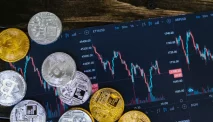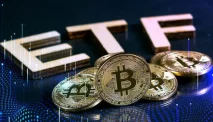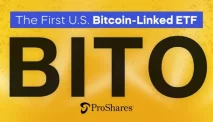By leveraging blockchain technology, TRON aims to provide full ownership rights, fair distribution of rewards, and high scalability and security for content creators and consumers.
Who Are the Founders of TRON?
TRON was founded by Justin Sun, a former chief representative of Ripple in China and a protege of Jack Ma, the founder of Alibaba. Sun is also the founder of Peiwo, a social media app with over 10 million users. Sun is the CEO of the TRON Foundation, a non-profit organization that oversees the development and governance of the TRON network.
Other key members of the TRON team include Lucien Chen, the former CTO who designed the TRON protocol; Marcus Zhao, the head of the engineering team; and Yi He, the co-founder of Binance who joined TRON as an advisor.
Why is TRON Important?
TRON is important because it challenges the status quo of the centralized digital content industry, which is dominated by a few powerful platforms that control the distribution and monetization of content.
These platforms often take a large cut of the revenue generated by content creators, censor or manipulate content according to their own agendas, and collect massive amounts of user data without consent.
TRON offers an alternative solution that empowers content creators and consumers with full ownership and rewards. By using blockchain technology, TRON enables users to create their own decentralized applications (dApps) that run on the TRON network and interact with smart contracts.
These dApps can offer various types of content services, such as streaming, gaming, social media, e-commerce, and more. Users can also directly reward content creators with TRX tokens or other digital assets issued on the TRON network.
What Makes TRON Unique?
TRON is unique because it combines several features that make it stand out from other blockchain platforms. Some of these features are:
- High performance: TRON claims to have a high throughput of up to 2,000 transactions per second (TPS), which is much faster than Bitcoin (7 TPS) or Ethereum (25 TPS). This allows for smooth and seamless user experience on the TRON network.
- Low cost: TRON has a low transaction fee of only 0.1% of one cent per transaction. This makes it affordable for users to access various content services on the TRON network.
- Scalability: TRON has a scalable architecture that consists of three layers: the storage layer, the core layer, and the application layer. The storage layer handles data storage and supports different types of consensus mechanisms. The core layer handles smart contracts, account management, and consensus. The application layer supports various dApps and protocols built on top of the core layer.
- Compatibility: TRON is compatible with Ethereum’s smart contract language Solidity and its virtual machine EVM. This means that developers can easily port their existing Ethereum dApps to the TRON network without much hassle.
- Ecosystem: TRON has a vibrant and diverse ecosystem that includes various partners, developers, investors, exchanges, media platforms, and community members. Some notable examples are BitTorrent, Opera Browser, Samsung Blockchain Keystore, Poloniex Exchange, CoinMarketCap Portal, DLive Streaming Platform, Steemit Blogging Platform, and more.
What are the key features of TRON?
Some of the key features of TRON are:
- TRX: The native cryptocurrency of the TRON network that serves as a medium of exchange and a store of value. Users can use TRX to pay for various content services on the TRON network, as well as to participate in the network governance and voting.
- TRON Power (TP): The staked version of TRX that gives users voting rights and influence over the network. Users can lock their TRX tokens in a process called freezing to obtain TP and vote for the super representatives (SRs) who run the network nodes and validate transactions.
- Super Representatives (SRs): The elected delegates who are responsible for the on-chain governance and maintenance of the TRON network. There are 27 SRs who are chosen by the TP holders every 6 hours. Each SR receives rewards in TRX for their contribution to the network.
- TRON Virtual Machine (TVM): The lightweight and compatible virtual machine that executes smart contracts on the TRON network. TVM supports multiple programming languages, such as Solidity, Java, Python, and more.
- TRON Network Protocol (TNP): The protocol that defines the rules and standards for communication and interaction on the TRON network. TNP consists of four sub-protocols: account protocol, transaction protocol, consensus protocol, and data protocol.
- TRON Decentralized Exchange (TRX Market): The decentralized exchange that allows users to trade various digital assets issued on the TRON network, such as TRC10 and TRC20 tokens. Users can create their own tokens and list them on the exchange without any intermediaries or fees.
TRON History
How did TRON come about?
TRON was founded by Justin Sun in September 2017 as a project that aims to decentralize the web and empower content creators and consumers. Sun was inspired by the vision of a free and open internet that was advocated by Tim Berners-Lee, the inventor of the World Wide Web.






